Spending time with our children is more important than spending money
Child Support Laws Are In Need Of Reform
Reblogged from The SoCraddock Method:
An opinion piece by Brenda Manghane-Washington from the Chattanoogan.comExcerpt:
I still believe there’s a need of reform in child support laws. As they stand, there is no distinction between a parent who can’t pay and a parent who refuses to pay child support. By incarcerating non-custodial parents who do not have the means to pay nothing is accomplished, the children still go without…
Part Time Dad’s
Why is it acceptable for divorced fathers to decide when and where they are going to parent their kids? Even in this day and age, most children of divorced homes live with their mother. Custody can be split anywhere from 50-50 to 30-70 like my arrangement. So we ship the kids off every other weekend to dad’s house with suitcase in hand. Read more… 324 more words
“My children are a gift that God gave me. The state did not receive those children from God and then forward them on to me with conditions. God gave those children to me. I will stand before Him to be judged on how I raise my children, and I don’t believe it’s appropriate for the state to step in and either play God– or play parent.” https://www.causes.com/posts/930187-our-children
Threats to impeach state judges have ramped up in the last month. Check out the latest post in “Gavel to Gavel”: http://gaveltogavel.us/ — at http://www.Causes.com/ChildrensRights.
Daveyone Familylawman World4Justice Campaign
HOW TO SELECT AN EXPERT IN PARENTAL ALIENATION
Parental alienation, a family dynamic in which one parent engages in behaviors that are likely to foster a child’s unjustified rejection of the other parent, is all too common. By some estimates 80% of all divorcing parents engage in some PA behaviors (Clawar & Rivlin, 1992). Although, not all children exposed to PA behaviors become alienated (unjustifiably reject one parent and align with the other), rates of alienation in children may be as high as 1% (Bernet, Boch-Galhau, Baker, & Morrison, 2010).
A body of research now exists establishing the negative long-term effects of exposure to PA behaviors for children (e.g., Baker & Eichler, 2014; Bernet, Baker, & Verrocchio, 2015; Verrocchio & Baker, 2015). Some research, along with a host of memoirs, also documents the extremely painful experience of alienation for the targeted parents (e.g., Baker, 2006; Baker, & 2006; Baker & Fine, 2014). Many targeted parents find themselves involved with legal as well as mental health professionals as they navigate their parental alienation journey (Gardner, 1998). Although there is considerable research and clinical wisdom in our current knowledge base, PA is still an emerging field. Presently, there is no credentialing body to provide professionals with an evidence-based training protocol and/or related information to address the problem of parental alienation.
This parallels the progression in other mental health fields. For example, although addictions existed well before the 1980’s, it wasn’t until 1988 that the American Academy of Health Care Providers in the Addictive Disorders was created to provide credentialing as a Certified Addiction Specialist. Prior to that, anyone could claim to be an expert in the treatment of addictions regardless of his or her knowledge, experience, or skill.This is problematic because—as a bona fide specialized field of practice—there is a knowledge base and core content that experts must have to properly assist families affected by parental alienation and to avoid common errors that can result in poor outcomes for such families. Such errors are very common among non-specialists because many aspects of parental alienation are highly counterintuitive. The field is counterintuitive because the human brain is hard-wired to commit certain types of systematic cognitive errors that are particularly common in PA cases (Miller, 2013).
Consequently, non-specialists who attempt to evaluate or manage such cases will often fall prey to a variety of cognitive and clinical errors, particularly if they rely on naïve intuition rather than a highly-specialized knowledge base. Furthermore, such clinicians are likely to have great confidence in their incorrect conclusions. Indeed, the usual repertoire of clinical skills is often inadequate in such cases and will often result in poor clinical and forensic outcomes (Miller, 2013). To avoid such errors, clinicians require highly-specific training in PA and related family dynamics such as pathological alignment and pathological enmeshment (Minuchin, 1974; Wallerstein & Kelly, 1980). PA-specific training and knowledge is required in order to avoid such mistakes. Three examples are provided here (and mentioned below as axiomatic positions within the field). The first is that mental health professionals are trained to rely on their clinical judgment and impressions when meeting and working with clients.
These impressions form the data points that clinicians draw on when making decisions about client’s mental health status. This is problematic for PA cases because targeted parents often present as anxious, agitated, angry, and afraid. Having sustained severe psychological and emotional trauma, they are in crisis mode and will therefore often make a poor first impression. They may have pressured speech. They may display psychomotor agitation. They may avoid eye contact. They may interrupt the clinician. They may appear to have an agenda and may even appear paranoid or delusional because they are likely to believe—accurately, if the case is indeed one of PA—that the other parent is trying to undermine their relationship with their child. They are also likely to appear defensive and—not unreasonably—be unwilling to take responsibility for causing the crisis. In contrast, alienating parents are likely to make an excellent first impression. They present as cool, calm, charming, and convincing. They are poised and in command of their emotions. They are basking in the glow of victory—of their children’s professed preference for them and emphatic rejection of the other parent.
To a PA novice (regardless of how experienced the clinician might be with other types of cases) the parents’ contrasting presentations may seem genuine and come to dominate hypothesis generation and clinical decision-making as to the family dynamics. The children’s complaints about the targeted parent may appear well-founded and their preference for the alienating parent may appear reasonable.

Non-specialists who fail to recognize this characteristic pattern—i.e., that targeted parents generally present poorly and alienating parents generally present well—are likely to accept the alienating parent’s version of events, especially when provided with an almost identical history by the child(ren). They are also likely to find the alienating parent more pleasant and likable, and thus more sympathetic.The second counter-intuitive aspect of PA, one that is rarely appreciated by non-specialists, is that in moderate and severe cases the alienation is usually accompanied by pathological enmeshment. This is problematic because unless the observer or evaluator has extensive expertise in this area, pathological enmeshment appears to be—and could be mistaken for—healthy bonding—a close, loving, healthy, parent-child relationship.
Evaluators who mistake enmeshment for healthy bonding fail to appreciate the serious psychopathology that is typical of enmeshed parents including pathological dependence or co-dependence, delusional thinking, and severe boundary violations. Such observers may also fail to appreciate that an enmeshed child has lost his or her identity, sense of self, individuality, autonomy, and critical reasoning skills to the point that he or she has become an extension of, and proxy for, the parent. This is potentially catastrophic in the setting of a custody dispute because the clinician or custody evaluator, having made these mistakes (often with great confidence), may then recommend that sole custody be awarded to the pathologically-enmeshed parent.
If this happens, the child has been entrusted to a deeply-disturbed, personality-disordered, abusive parent who is incapable of putting the child’s needs ahead of his or her own. Indeed, in our collective experience, when cases of severe alienation and enmeshment are evaluated by professionals who are not bonafide specialists in alienation and estrangement such errors are common. Third, a non-PA specialist is unlikely to know how to differentiate an abused child from an alienated child. Alienated children present as extremely angry, rude, aggressive, and provocative towards the targeted parent. They are likely to deny ever having had a good relationship with that parent and are unlikely to express any interest in repairing the relationship in the future. While this may appear to be a rational response to abusive parenting, it is actually not the expected response from an abused child.
Research and the clinical literature consistently report that abused children generally cling to and are protective of the abusive parent. They want to repair the relationship and forgive the abuser, and they are likely to deny or minimize past abuse (Baker & Schneiderman, 2015; Clawar & Rivlin, 2013; Gottlieb, 2012).
In fact, it is only alienated children who demonstrate a particular clinical picture which may—to the untrained clinician—appear to be consistent with maltreatment. In sum, there is a knowledge base in the field of parental alienation that has been gathered through academic research and expert clinical observation and shared among experts but that is not yet routinely available to front-line clinicians in the form of a credentialing or training protocol. In the absence of such credentialing, any mental health professional can assume the title of an “alienation expert” with respect to diagnosis, intervention, or treatment regardless of his or her level of actual knowledge. Because we believe that some mental health professionals naively or otherwise claim to be PA experts when in fact they are not, we have come together to provide targeted parents with some guidelines for differentiating true PA specialists from non-specialists or pseudo-specialists.
Our motivation for undertaking this effort was that we understand how horrible it is for targeted parents to have their relationship with their beloved child undermined, disrupted, or damaged by a third party, either the other parent or some other alienator. Collectively, we have worked with several thousand parents who want to protect their children from this terrible form of child abuse. We know that many targeted parents are avid consumers of PA knowledge and strive to educate themselves about this problem.
We have come together, as experts in the field, to help such parents weed through the myriad resources now available on and off-line and to help them identify accurate and reliable information. Regrettably, some professionals claim to be experts in PA when, in fact, they lack the necessary background, credentials, or expertise to properly advise parents in this regard. Worse, some of these self-proclaimed “experts” promote ideas that are inconsistent with well-established scientific principles—that is, their opinions and theories are in conflict with generally-accepted, evidence-based scientific understanding about what PA is and how to remedy it.
Unfortunately, it is not always easy for non-scientists to distinguish between good science and bad science—or between science and pseudoscience. As the field has grown, and as more and more is written, there has been an explosion of information on the subject of parental alienation. There are multiple websites, YouTube videos, blogs, and Facebook pages devoted to the subject. When sifting through this abundance of information, it is important to understand that some statements and sources are more accurate than others. Likewise, some “experts” are more scientific than others.
The purpose of this brief paper is to help targeted parents identify who is and is not truly an expert in the field. The rest of this paper is divided into two sections. First, we present some guidelines as to what a targeted parent should look for with respect to the background, experience, and credentials of a genuine expert. Second, we identify core information, fundamental points, and basic concepts to which an expert should subscribe. These basic premises have been scientifically validated and are neither controversial nor debatable among genuine experts who are credible specialists in alienation and estrangement. No genuine expert in PA should disagree with any of these ideas—they are axiomatic within the field.
Factors to Consider When Selecting an Alienation Expert
The qualifications below can be used as a checklist to identify true expertise as opposed to limited or pseudo-expertise. It is imperative for the expert to have a strong background and training in relevant areas—rooted in sound science and the scientific method. While experience as a targeted/alienated parent, or perhaps a formerly-alienated child, can be very helpful, personal experience alone is not enough. We believe that it is this scientific educational background—applied to the phenomenon of PA—that separates truth from ideology, fact from fiction, and good advice from bad. Though a genuine expert might not meet every one of these criteria—for instance, an excellent clinician might not have published any scientific papers—a true expert should have most of these.
1. An advanced degree (masters or doctoral) from an accredited educational institution in a relevant discipline or field. This is not meant to trivialize the importance of some lay counselors and coaches who, through experience and/or “on-the-job training” may have much to offer, but it is critical for targeted parents to understand that, in general, PA is a complex, complicated problem that generally requires substantial scientific understanding and professional expertise.
2. A deep, extensive knowledge of the clinical literature regarding pathological alignment, alienation and estrangement, and pathological enmeshment, as well substantial knowledge and understanding of borderline, narcissistic, and sociopathic personality disorders. The reason for the latter point is that such personality disorders are not only common among alienating parents (and virtually ubiquitous among severe alienators), but are often missed by non-specialists, in part because individuals with these disorders tend to be master manipulators who are charming and highly-skilled at managing first impressions. They also tend to be pathologically dependent which helps to explain the pathological enmeshment with the child.
3. Authored or co-authored published works regarding PA in peer-reviewed publications. (Self-publication does not meet this criterion.)
4. Completed educational programs or other training by qualified experts in relevant areas. These training programs should be recent and should include advances in research and evidence-based practice.
5. Provided Continuing Education (CE) training to mental health professionals or Continuing Legal Education (CLE) to legal professionals on parental alienation. CE and CLE training experience suggests the presenter is a recognized expert in the subject matter he or she is teaching.
6. Qualified as an expert in a court of law with respect to PA and related issues.
7. Maintained an ongoing, collaborative communication with other experts in PA in order to benefit from an exchange of ideas and recent advances in the field.
Scientifically-Derived Consensus Regarding Parental Alienation
PA was first described decades ago, and has been given a variety of names. As the problem has become better recognized, our understanding has become increasingly refined. Evidence-based practice dictates that the key elements—the various “moving parts”—of PA must be examined and tested through using the scientific method. The following expert consensus opinions are the result of this process and form the foundation of our current understanding of alienation and related issues.
1. Alienated children present very differently than estranged children. The similarities are superficial. Although both alienated children and estranged children will often align with one parent over the other, to expert eyes—by which we mean a professional who specializes in alienation and estrangement—it is usually straightforward, if not easy, to distinguish between the two. On the other hand, the differences are often missed by non-specialists.
2. Many aspects of identification and treatment of PA are counter intuitive. For example, alienated children often appear to have a healthy bond with the alienating parent although it is actually an unhealthy, enmeshed relationship. Many alienating parents present well to evaluators and courts although they are actually engaging in destructive behaviors. Many targeted parents appear anxious and agitated despite being healthy and competent. For this reason, only a qualified PA specialist should conduct this work.
3. Children rarely reject a parent—even an abusive parent. Therefore, in the absence of bonafide abuse or neglect, when a child strongly aligns with one parent and emphatically rejects the other, that pattern strongly suggests alienation—not estrangement.
4. Clinicians and other professionals should carefully consider severity. PA is typically a progressive process in which—sometimes gradually, sometimes suddenly—the child begins to resist contact with and/or reject the previously-loved targeted parent. Severity should be identified as mild, moderate, or severe. This is important because, among other things, it allows the examiner to identify early warning signs of PA which, in turn, permits a qualified clinician to provide interventions in ways that are customized and appropriate for the level of severity.
5. The work of Dr. Richard Gardner (e.g., 1998), a child psychiatrist, provided a theoretical framework and conceptual model for understanding the phenomenon. His original insights have since been validated by both researchers and clinicians. His work was based on sound scientific principles and generally-accepted standards of psychiatric practice.
6. The eight manifestations of parental alienation first identified by Dr. Gardner are generally-accepted and valid. Although others have been identified, the original eight are well-established as valid and useful indicators of alienation, and are rarely, if ever, seen with estrangement. They have been tested empirically and found to be accurate, valid, and reliable.
7. The seventeen alienation behaviors described by Dr. Amy J.L. Baker are research-supported and evidence-based. They provide a valid and reliable set of useful indicators with which to assess the behavior of favored parents with respect to PA.
8. Although some cases are hybrids, the assertion that most cases are hybrids (meaning a mix of alienation and estrangement) is not supported by the clinical literature.
9. Children do not have the cognitive maturity or the capacity to make an informed decision about whether to have a relationship with a parent.
They cannot imagine the implications of having a parent absent from their lives, and do not necessarily know what is in their best interest. Nor do they genuinely want the power to cut a parent out of their lives.
10. Children (and adults) can be unduly influenced by emotional manipulation to act against their own best interests. They can be misled to believe things that are not true, even about a parent. It is possible to induce false memories in children and/or to program children to relate events—often sincerely and convincingly (at least to naive or unwary observers)—that, in fact, did not take place or did not take place in the way described.
11. Many, but not necessarily all, alienating parents have one or more personality disorders (typically of the borderline, narcissistic and/or sociopath type). The more extreme or severe the alienating behavior, the more likely it is that the alienating parent has an underlying personality disorder.
12. Parental alienation is a form of child abuse, specifically psychological and emotional abuse. It meets the diagnostic criteria for child psychological abuse as described in the Diagnostic and Statistical Manual of Mental Disorders (the DSM-5) published by the American Psychiatric Association (2013).
13. Although Dr. Gardner popularized the concept and clarified many of the definitions and subsets inherent in the determination of what PA means, its development, and its deleterious effects upon the family, the concept appeared long before Dr. Gardner first wrote about the problem in 1985.
14. The model provided by Dr. Gardner has provided an excellent framework for both diagnosis and treatment. Although it has been refined and enhanced over the past 30 years, the basic concepts remain valid. Virtually all of the successful treatment programs for PA are based on his original model. Despite unsupported claims to the contrary, no alternative model has been shown to be clinically, theoretically, or scientifically superior. For the most part, proposed alternatives provide little or no outcome data and/or appear to be neither clinically, nor theoretically, nor scientifically sound.
15. Only reunification therapy provided by a PA specialist who thoroughly understands the clinical and scientific points in this paper, and whose treatment plan is highly-customized for PA based on sound scientific evidence and clinical outcome data, is recommended. Team-based “intensive reunification therapy” is appropriate in treating moderate to severe alienation while traditional in-office, out-patient reunification therapy may have its place when considering treatment for mild alienation. The treatment should be appropriately matched to the family.
We hope this information will be helpful in obtaining qualified advice or assistance.
Amy J. L. Baker, Ph.D.Steven G. Miller, M.D.J. Michael Bone, Ph.D.And in alphabetical order
Katherine Andre, Ph.D.Rebecca Bailey, Ph.D.William Bernet, M.D.Doug Darnall, Ph.D.Robert Evans, Ph.D .Linda Kase Gottlieb, LMFT, LCSW-RDemosthenes Lorandos, Ph.D., J.D.Kathleen Reay, Ph.D.S. Richard Sauber, Ph.D.
Related articles
One of the huge problems we have in our fight for Family Law Reform is the problem of “enablers”.
We’ve got so many people enabling and empowering the horrific behavior going in within Family Law.
We’ve got lawyers counseling clients that it’s right and good for them to limit or eliminate the relationships between children and NCP’s to gain freedom and child support. We even have lawyers who will subtly coach clients on how to make false allegations to gain an advantage.
We’ve got judges who absolutely detest hearing custody disputes, so they use a variety of direct and indirect methods to make the cost of enforcing visitation prohibitively expensive (child support, litigation, procedure, unequal enforcement of family court orders)
We’ve got court-appointed social workers who are making a killing by mining data the necessary data to support a decision they already know the Court wants to make.
We’ve got…
View original post 322 more words










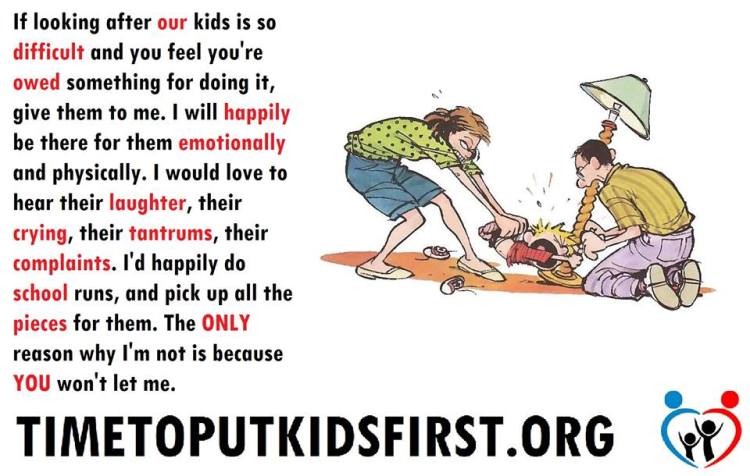










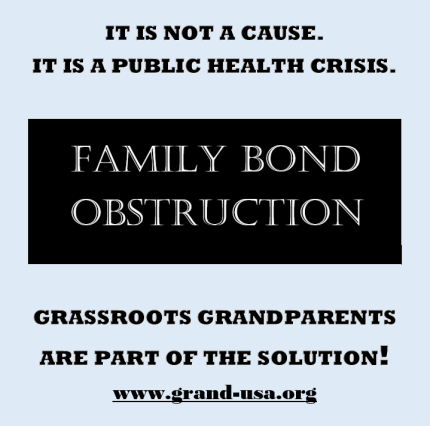







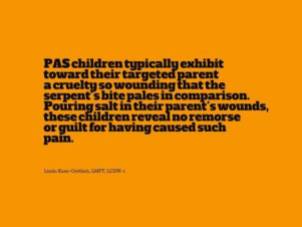




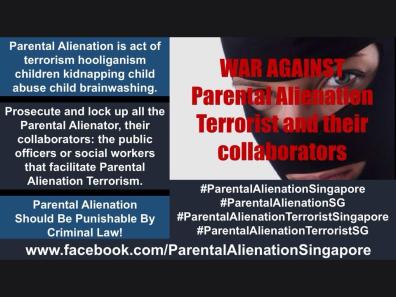

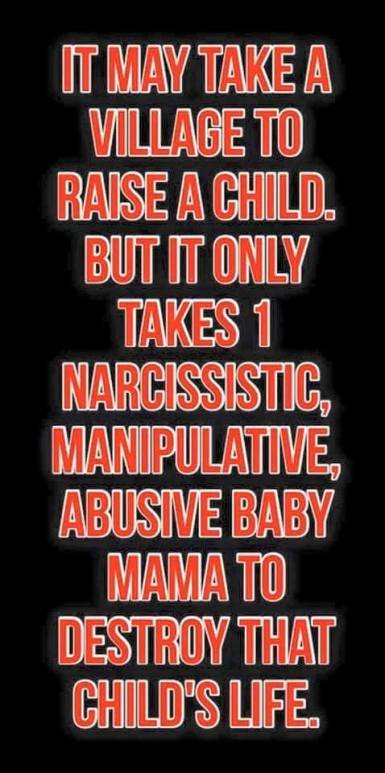
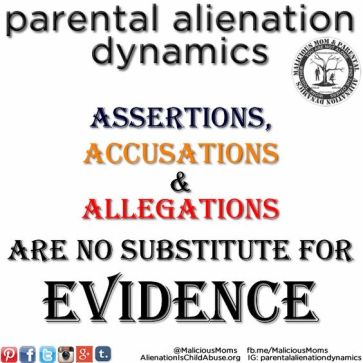












PRO SE RIGHTS:
Sims v. Aherns, 271 SW 720 (1925) ~ “The practice of law is an occupation of common right.”
Brotherhood of Trainmen v. Virginia ex rel. Virginia State Bar, 377 U.S. 1; v. Wainwright, 372 U.S. 335; Argersinger v. Hamlin, Sheriff 407 U.S. 425 ~ Litigants can be assisted by unlicensed laymen during judicial proceedings.
Conley v. Gibson, 355 U.S. 41 at 48 (1957) ~ “Following the simple guide of rule 8(f) that all pleadings shall be so construed as to do substantial justice”… “The federal rules reject the approach that pleading is a game of skill in which one misstep by counsel may be decisive to the outcome and accept the principle that the purpose of pleading is to facilitate a proper decision on the merits.” The court also cited Rule 8(f) FRCP, which holds that all pleadings shall be construed to do substantial justice.
Davis v. Wechler, 263 U.S. 22, 24; Stromberb v. California, 283 U.S. 359; NAACP v. Alabama, 375 U.S. 449 ~ “The assertion of federal rights, when plainly and reasonably made, are not to be defeated under the name of local practice.”
Elmore v. McCammon (1986) 640 F. Supp. 905 ~ “… the right to file a lawsuit pro se is one of the most important rights under the constitution and laws.”
Federal Rules of Civil Procedures, Rule 17, 28 USCA “Next Friend” ~ A next friend is a person who represents someone who is unable to tend to his or her own interest.
Haines v. Kerner, 404 U.S. 519 (1972) ~ “Allegations such as those asserted by petitioner, however inartfully pleaded, are sufficient”… “which we hold to less stringent standards than formal pleadings drafted by lawyers.”
Jenkins v. McKeithen, 395 U.S. 411, 421 (1959); Picking v. Pennsylvania R. Co., 151 Fed 2nd 240; Pucket v. Cox, 456 2nd 233 ~ Pro se pleadings are to be considered without regard to technicality; pro se litigants’ pleadings are not to be held to the same high standards of perfection as lawyers.
Maty v. Grasselli Chemical Co., 303 U.S. 197 (1938) ~ “Pleadings are intended to serve as a means of arriving at fair and just settlements of controversies between litigants. They should not raise barriers which prevent the achievement of that end. Proper pleading is important, but its importance consists in its effectiveness as a means to accomplish the end of a just judgment.”
NAACP v. Button, 371 U.S. 415); United Mineworkers of America v. Gibbs, 383 U.S. 715; and Johnson v. Avery, 89 S. Ct. 747 (1969) ~ Members of groups who are competent nonlawyers can assist other members of the group achieve the goals of the group in court without being charged with “unauthorized practice of law.”
Picking v. Pennsylvania Railway, 151 F.2d. 240, Third Circuit Court of Appeals ~ The plaintiff’s civil rights pleading was 150 pages and described by a federal judge as “inept”. Nevertheless, it was held “Where a plaintiff pleads pro se in a suit for protection of civil rights, the Court should endeavor to construe Plaintiff’s Pleadings without regard to technicalities.”
Puckett v. Cox, 456 F. 2d 233 (1972) (6th Cir. USCA) ~ It was held that a pro se complaint requires a less stringent reading than one drafted by a lawyer per Justice Black in Conley v. Gibson (see case listed above, Pro Se Rights Section).
Roadway Express v. Pipe, 447 U.S. 752 at 757 (1982) ~ “Due to sloth, inattention or desire to seize tactical advantage, lawyers have long engaged in dilatory practices… the glacial pace of much litigation breeds frustration with the Federal Courts and ultimately, disrespect for the law.”
Sherar v. Cullen, 481 F. 2d 946 (1973) ~ “There can be no sanction or penalty imposed upon one because of his exercise of Constitutional Rights.”
Schware v. Board of Examiners, United State Reports 353 U.S. pages 238, 239. ~ “The practice of law cannot be licensed by any state/State.”
LikeLiked by 4 people
LikeLiked by 3 people
LikeLiked by 3 people
LikeLiked by 2 people